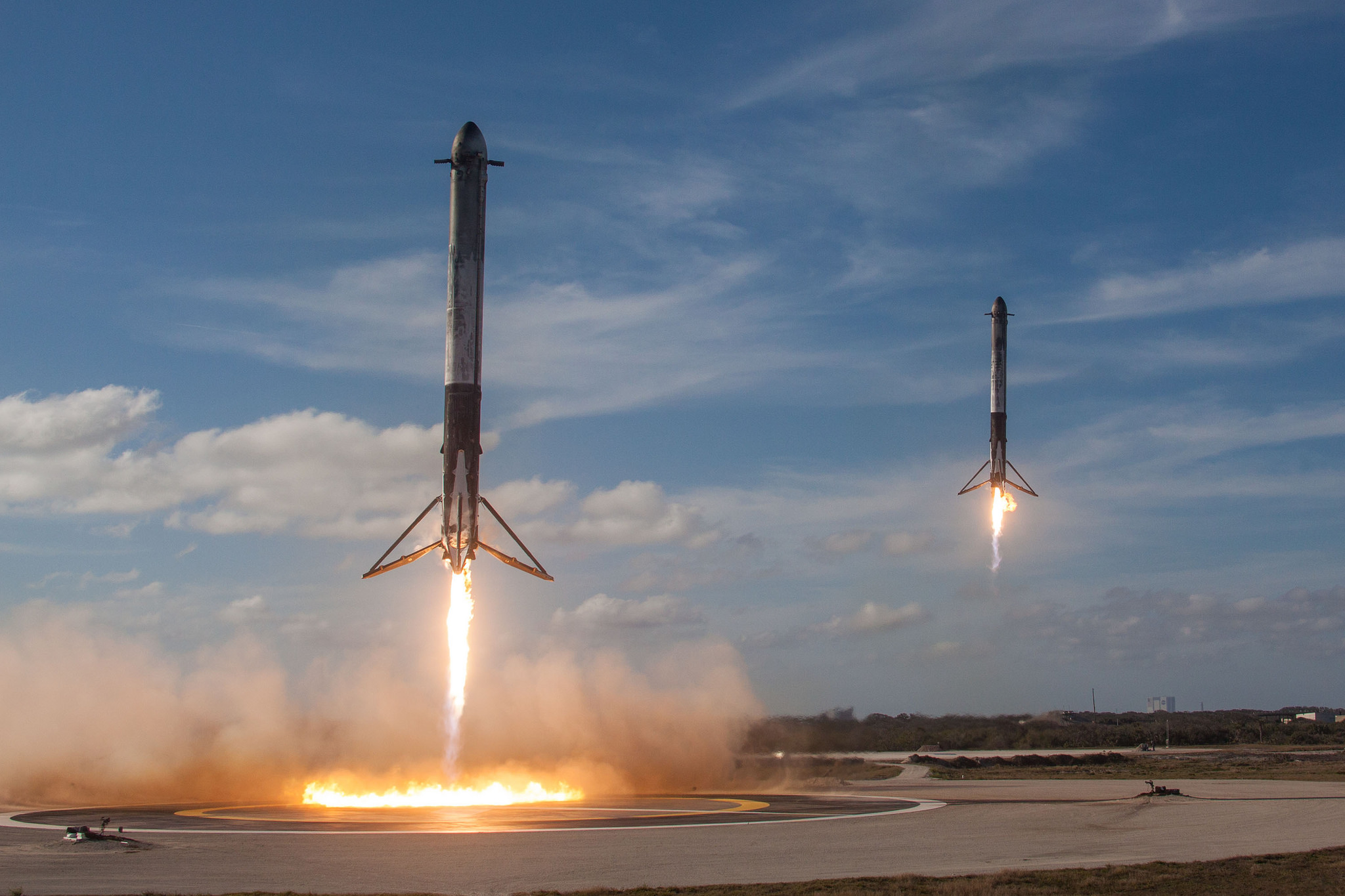'Crazy Things Can Come True': Elon Musk Reacts to Falcon Heavy Launch Success
CAPE CANAVERAL, Fla. — After the successful first launch of the Falcon Heavy megarocket yesterday (Feb. 6), which is propelling a Tesla electric car out into the solar system, SpaceX CEO Elon Musk still seemed surprised that the mission had succeeded.
"I had this image of a giant explosion on the pad, with a wheel bouncing down the road and the Tesla logo landing somewhere with a thud," Musk told reporters here at Kennedy Space Center after the launch. "But fortunately, that's not what happened."
Instead, the launch went off almost without a hitch — the rocket's second stage made it into orbit, and the Falcon 9 first stages that served as the rocket's two side boosters detached and returned to land on Earth. [Out-of-This-World Photos from Falcon Heavy's Historic Debut Flight]
Only the center "core" booster failed to land on its intended drone ship: "Apparently it hit the water at 300 miles an hour and took out two of the engines on the drone ship," Musk said. "That sounds like some pretty fun footage, so if the cameras didn't get blown up as well, then we'll put that out for a blooper reel."
Musk arrived at the news conference late after visiting the two boosters that landed nearly simultaneously shortly after the launch. Although the side boosters aren't set to fly again, both were in good flying condition, he said — luckily for SpaceX, as the boosters had new, "super expensive and awesome" titanium grid fins to help guide their flight.
After the launch, SpaceX surprised viewers with a livestreamed view from the red Tesla, showing the vibrant sphere of Earth passing by as the car (and the rest of the payload) rotated through space.
"I think it looks so ridiculous and impossible," Musk said. "You can tell it's real because it looks so fake, honestly. We'd have way better CGI if it was fake. The colors all look kind of weird in space. There's no atmospheric occlusion; everything's too crisp."
Breaking space news, the latest updates on rocket launches, skywatching events and more!
He noted that SpaceX hadn't tested the car's materials for survival in space, although the mannequin riding in the driver's seat is wearing a working spacesuit designed by the company. The car's dashboard also hosts a miniature car with its own even tinier rider.
"It's just literally a normal car in space — I kind of like the absurdity of that," Musk said. "It's kind of silly and fun, but I think that silly, fun things are important … I think the imagery of it is something that's going to get people excited around the world, and it's still tripping me out. I'm tripping balls here."
SpaceX doesn't have any plan for the electric car once it's set on its elongated orbit around the sun, Musk said.
"After that it's just going to be out there in space for maybe millions or billions of years," he added. "Maybe discovered by some future alien race thinking 'What the heck? What were these guys doing? Did they worship this car? Why do they have a little car in the car? And that'll really confuse them."
Musk said SpaceX was almost done with the development of the Falcon 9 and Falcon Heavy, and would soon turn its focus to the upcoming rocket currently nicknamed BFR. (The company's Dragon spacecraft, which currently carries cargo to the International Space Station and may soon carry crewmembers, is nearing its last version as well, Musk said.) Although the Falcon Heavy could do that as well, and is capable of launching things directly to Pluto and beyond, the BFR is designed to work more efficiently for interplanetary travel.
But at least at the news conference, Musk held off on BFR discussion to celebrate the successful first launch of a vehicle with more than twice as much payload capacity of any other existing rocket — the most powerful working rocket in the world, which took SpaceX four more years of development than initially anticipated.
"Crazy things can come true," Musk said. "I didn't really think this would work — when I see the rocket lift up, I see a thousand things that could not work, and it's amazing when they do."
"I've seen rockets blow up so many different ways, so it's a big relief for when it actually works," he added.
Email Sarah Lewin at slewin@space.com or follow her @SarahExplains. Follow us @Spacedotcom, Facebook and Google+. Original article on Space.com.

Sarah Lewin started writing for Space.com in June of 2015 as a Staff Writer and became Associate Editor in 2019 . Her work has been featured by Scientific American, IEEE Spectrum, Quanta Magazine, Wired, The Scientist, Science Friday and WGBH's Inside NOVA. Sarah has an MA from NYU's Science, Health and Environmental Reporting Program and an AB in mathematics from Brown University. When not writing, reading or thinking about space, Sarah enjoys musical theatre and mathematical papercraft. She is currently Assistant News Editor at Scientific American. You can follow her on Twitter @SarahExplains.

